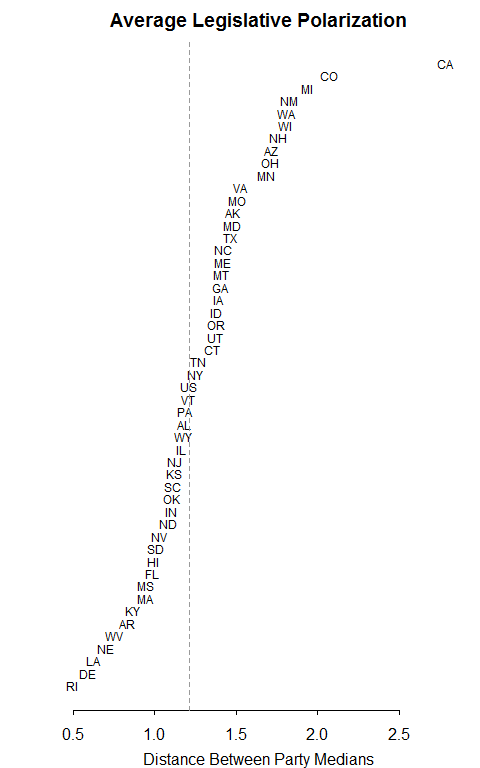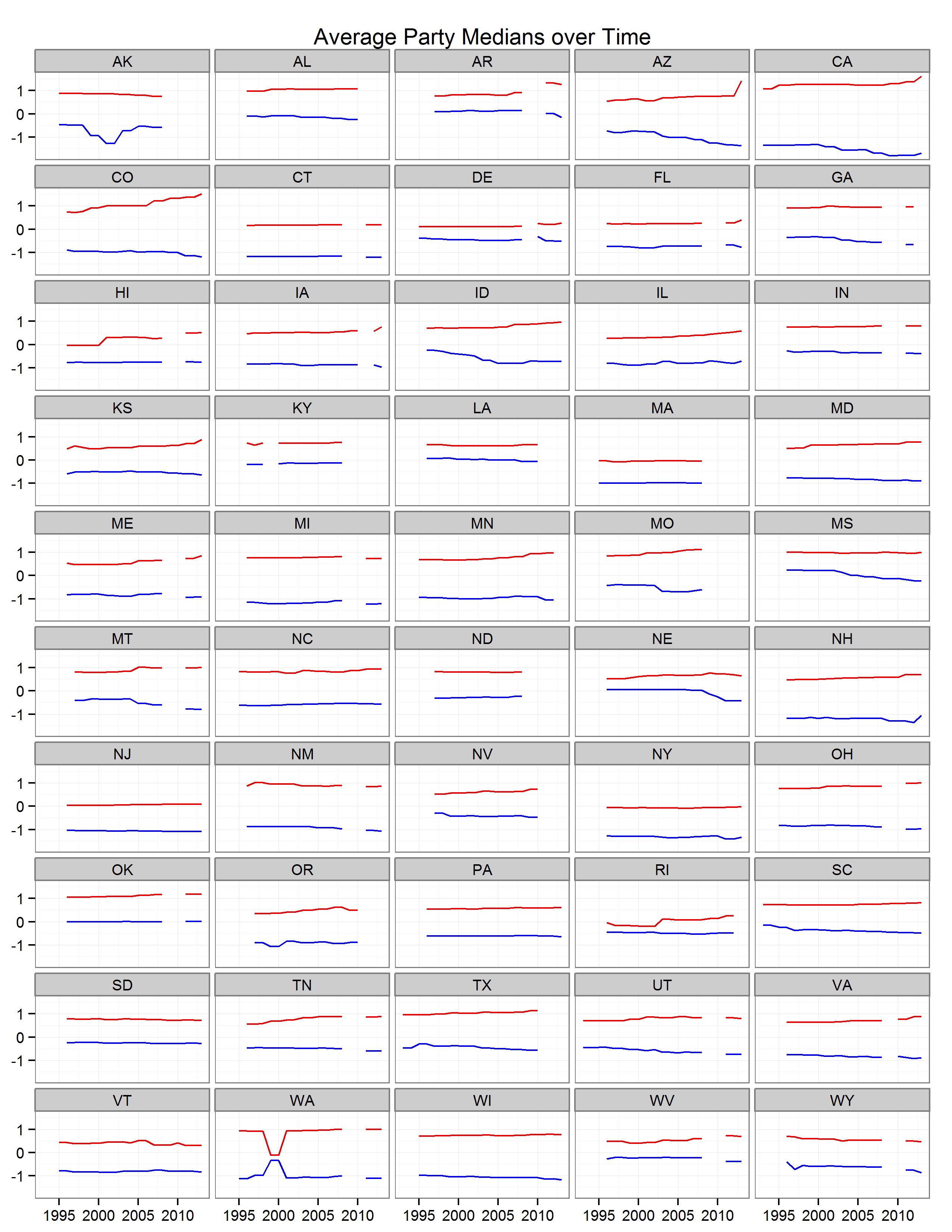The Monkey Cage has a great post that compares legislative polarization all 50 states. The first graph (credit to Boris Shor) shows polarization averaged across both chambers from 1996 through 2013. As you can see, Maryland is the fourteenth most polarized state in the country, though not that terribly far above American average.
Polarization is greatest in California where Democrats are very liberal and Republicans are very conservative, as shown in Shor’s second graph. In this graph, the vertical axis measures conservatism and the horizontal axis shows the year. The graph not only makes it possible to compare the parties within states but across states.
The change in polarization within each chamber over time is more easily assessed with yet another graph produced by Boris Shor and Nolan McCarty that charts polarization over time for both chambers in 49 states and Nebraska’s unique unicameral legislature.
In Maryland, polarization in the House has been relatively flat over the last two decades. Polarization has increased in the Maryland Senate. A bump up around the time of the 1998 elections increased Senate levels to those of the House. The Senate is now slightly more polarized than the House after another smaller increase in Senate polarization after the 2002 elections.
In Congress, heightened polarization has been driven much more by Republicans than Democrats, though Democrats are more liberal than in the past. The changes in General Assembly polarization appear driven more or less equally by both parties. Over the 18 years in the study, Democratic liberalism and Republican conservatism each increased by roughly 0.25 on the scale. (A very close look indicates that Republican conservatism probably increased slightly more than Democratic liberalism.)
These trends are not terribly shocking to followers of Maryland politics. More moderate Republicans like former Del. Connie Morella and Sens. Jean Roesser and Howard Denis no longer sit in the General Assembly, as many moderate Republicans have become Democrats and Montgomery County Democrats are no longer willing to vote for even moderate Republicans in sufficient numbers. Republicans have also seen several mainstream conservative senators defeated by more conservative delegates in primaries.
Conservative Democratic numbers have dwindled. Places that elected conservative Democrats now usually choose Republicans. Though a few, like Del. David Randolph, hang on in territory that is tough for Democrats, the days of the Eastern Shore electing very conservative Democrats like Sen. Frederick Malkus are over.



